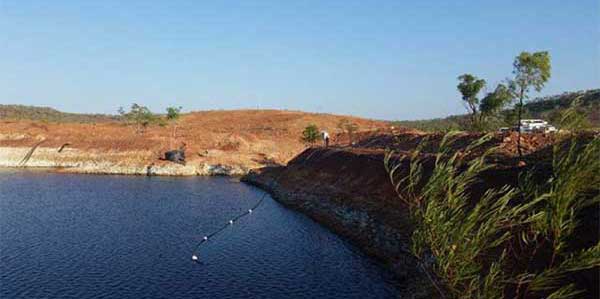Minerals: Remote mine monitoring technology
Space technology has a wide range of uses within the minerals sector, including enhancing the safety and efficiency of legacy mine site management across the Northern Territory. These mines have an estimated unfunded liability of over $1 billion. The Northern Territory Government’s legacy mines unit manages these sites through a geodatabase, remote monitoring, and the use of drone technology.
High rainfall during the Northern Territory’s wet season frequently makes it impossible to reach some mine sites. Historically this has made it difficult to manage some environmental risks, such as acid and metalliferous drainage. However, the installation of remote monitoring equipment (connected to satellite and broadband systems) at multiple legacy mine sites has made the process far easier. Officers can now remotely monitor site weather conditions, stream flows, water levels and water quality plus control systems remotely, such as activating solar powered bore pumps to collect contaminated groundwater (thereby preventing entry into waterways).
Many legacy mine sites are in remote locations. Accessing these sites can be timing consuming and dangerous for mining officers. Using space technology, a mining officer can now travel to a remote location, deploy a drone and cover many square kilometres in minutes, without having to leave the safety of their vehicle. Drone technology is also allowing for more efficient cataloguing of mine shafts, decision making through remote provision of high definition video of mine sites, and the ability to create 3D models to assist with rehabilitation.
The future looks even more exciting, with opportunities to take advantage of new low-orbit satellites, the increasing capability of drones, and more advanced software systems.


Figure 1: Floating EC sensor in Pit Lake
Give feedback about this page.
Share this page:
URL copied!